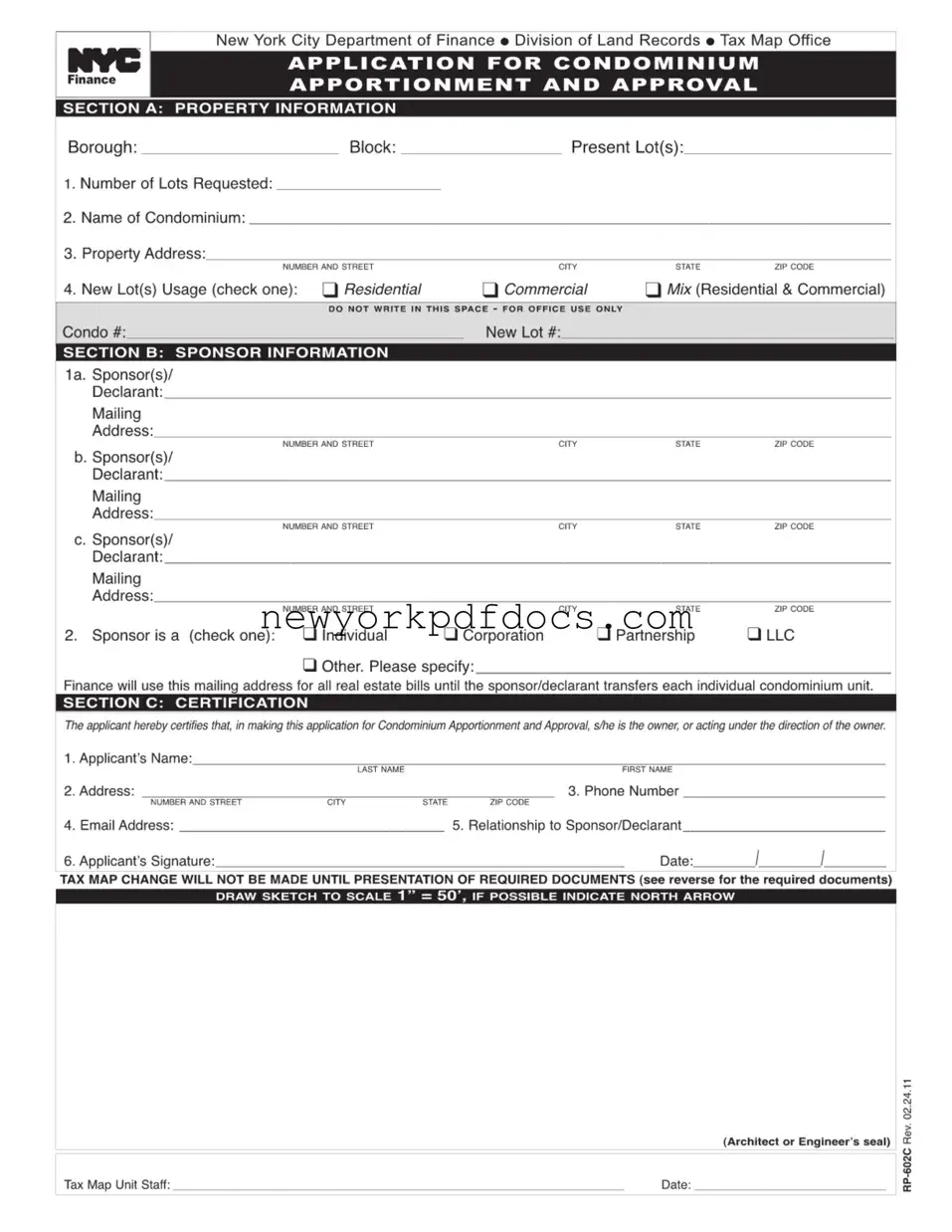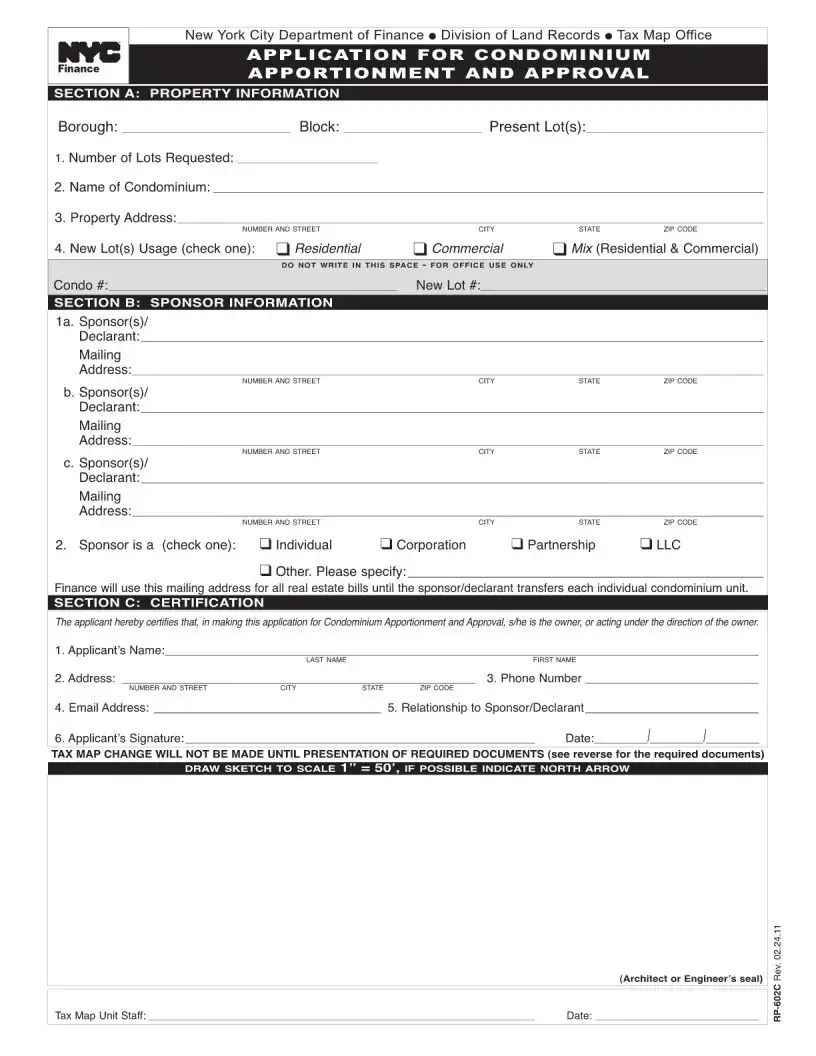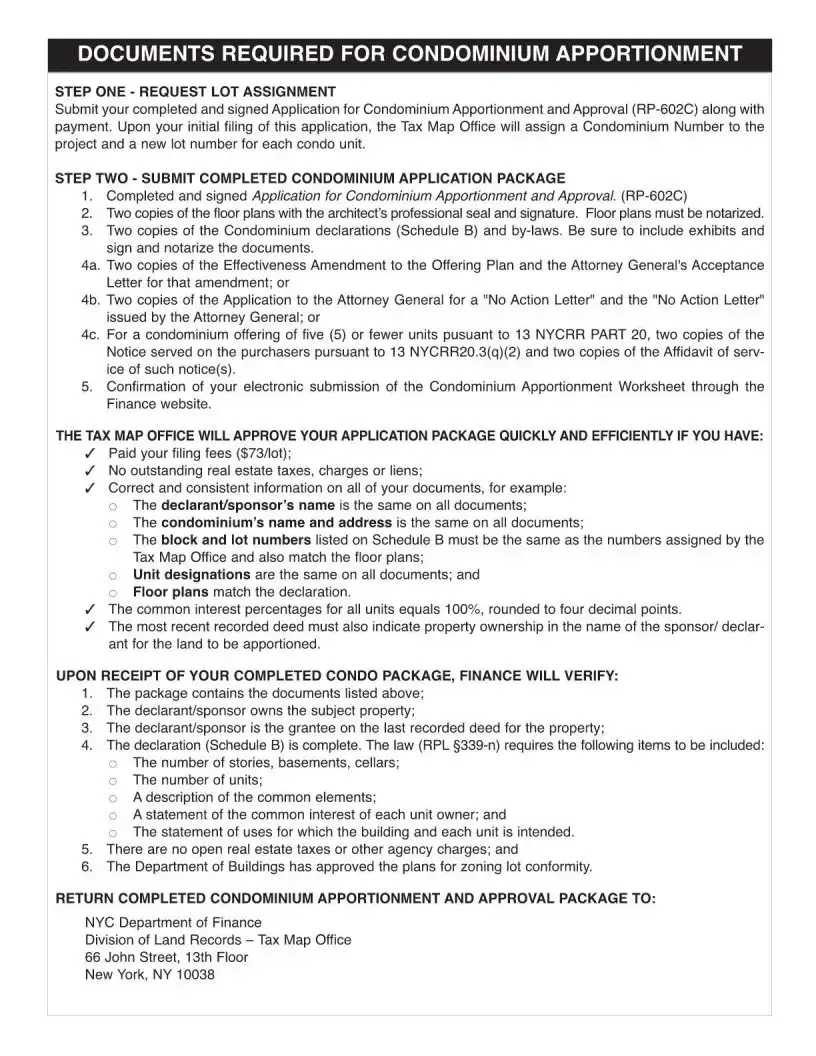Filling out the NYC RP 602C form can be a daunting task, and many individuals make mistakes that can delay their application. One common error is leaving sections incomplete. Each part of the form is crucial for processing your request. Omitting information, such as the property address or the number of lots requested, can lead to unnecessary delays or even rejection of the application.
Another frequent mistake is inconsistent information across documents. It is essential that the name of the condominium, the block and lot numbers, and the declarant’s name match on all submitted paperwork. If discrepancies arise, the Tax Map Office may question the validity of your application, causing additional complications.
Many applicants also fail to provide the correct mailing address for the sponsor or declarant. This address is vital for receiving important notifications and documents related to the application. Ensuring that this information is accurate can help avoid future communication issues.
In addition, applicants often overlook the requirement for notarized floor plans. Without the architect’s seal and signature, the application may be considered incomplete. This step is not just a formality; it verifies the authenticity of the plans submitted.
Some individuals neglect to check the common interest percentages for all units, which must equal 100%. Rounding errors or miscalculations can lead to complications in the approval process. Double-checking these figures can save time and effort later on.
Another mistake involves failing to submit the necessary supporting documents. The application requires multiple items, including copies of the condominium declarations and by-laws. Omitting any of these documents can result in delays or a request for resubmission.
Additionally, applicants sometimes forget to include payment for filing fees. The fee of $73 per lot must accompany the application. Without this payment, the application will not be processed, and the entire effort may be in vain.
Lastly, some people do not take the time to verify that all required documents are included in the submission. A thorough review of the checklist provided in the instructions can prevent missing items that could hinder the approval process. Taking these steps ensures a smoother experience when submitting the NYC RP 602C form.


